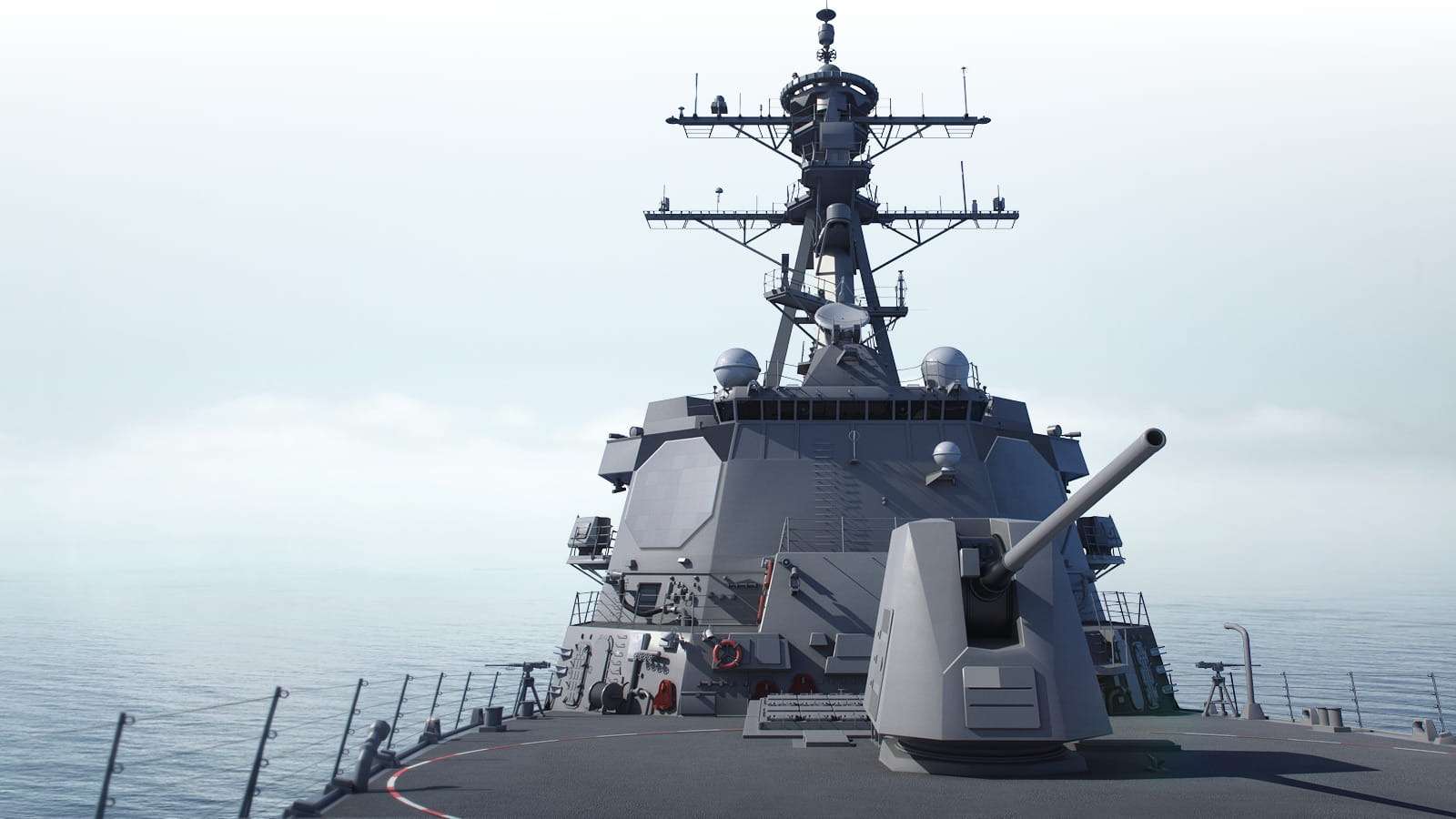
The U.S. Navy is putting the advanced AN/SPY-6 naval radar on 29 new ships, and now it will add this system to the first existing ships, starting with a $619 million contract with Raytheon Missiles & Defense, a Raytheon Technologies business.
The SPY-6 radar is significantly more sensitive than the 40-year-old predecessor it’s replacing. Its enhanced detection capability and more accurate discrimination allow sailors to find and track enemy missiles and fighter jets simultaneously, faster and at greater distances.
“SPY-6 is a paradigm shift in radar technology, providing sailors with improved situational awareness, enhanced ballistic missile defense, reduced maintenance and downtime, and increased range,” said Mike Mills, senior program director of Naval Radars at Raytheon Missiles & Defense. “It’s designed to keep sailors safe and missions successful.”
With the award, Raytheon Missiles & Defense will integrate the SPY-6(V)4 radar onto the first Flight IIA guided missile destroyers in 2026, marking the first time this variant will be installed on a ship. This latest upgrade is the second option exercised from a hardware, production and sustainment contract that is valued up to $3.16 billion over five years.
The SPY-6 radar is made of many smaller radars called Radar Modular Assemblies – 2x2x2 boxes that can be arranged to fit on any ship and function for any mission. It can include as few as four RMAs or as many as 57, meaning it can go on smaller ships such as frigates and unmanned vessels, as well as larger ships such as the next-generation destroyers.
“We have decades of experience as a mission and systems integrator of defense solutions, so we are ready to meet a variety of size needs and missions for the U.S. and its allies,” Mills said. “Scalability cuts production costs because we aren’t developing something new for every ship or variant.”
SPY-6(V)1
Four versions of the SPY-6 radar will outfit seven types of ships in the Navy’s future fleet, starting with SPY-6(V)1.The SPY-6(V)1 radar is integrated onto the Navy’s newest ship, a Flight III guided missile destroyer, the USS Jack H. Lucas (DDG 125). The ship has been underway twice and the radar successfully completed initial at-sea trials on the destroyer, with the latest occurring in March 2023 and first in December 2022.This variant includes four array faces, each with 37 RMAs, that provide continuous, 360-degree situational awareness.”All four faces are operating at full power and performing flawlessly,” Mills said. “It really is a testament to the work we’ve done over the last seven to eight years to position us as the builder of the SPY-6 family of radars for the Navy.”
SPY-6(V)2 and SPY-6(V)3
The SPY-6(V)2 rotating radar and the SPY-6(V)3 fixed-face radar – known together as EASR, or Enterprise Air Surveillance Radar – is now installed on the Navy’s new amphibious warship, the USS Richard M. McCool (LPD-29). Sea trials are slated to start in 2023.The SPY-6(V)3 with nine RMAs in three, fixed-face configurations, is installed on the Navy’s first aircraft carrier, the USS John F. Kennedy (CVN-79). Testing starts in late 2023, followed by a series of sea trials in 2024.”We’re on the cusps of these ships being ready for use in a mission perspective versus in a test program,” Mills said.Raytheon Missiles & Defense has invested more than $500 million in infrastructure and capacity enhancements for SPY-6, including advanced automation technology at its 30,000 square-foot Radar Development Facility.
“We are really booming in production,” Mills said. “We’re excited to start providing this capability not only domestically, but also internationally.” The business has expanded to three test sites and will be working with five different shipyards by 2025.“We’re working together seamlessly as one team – the Navy, the shipbuilders, Raytheon Missiles & Defense,” Mills said. “Nobody knows what badge you wear when you walk into these rooms. Everybody wants to get this technology to the warfighter as fast as possible.”The business is looking to grow its talent to meet customer demands of the rapidly evolving global market.“The time is right for both early- and mid-level career industry professionals to join the business,” Mills said. “We’re moving out of the baby boom era, so people have retired, and that has created opportunities for advancement.”On July 1, 2023, Raytheon Technologies is also realigning the company from four business units to three – Collins Aerospace, Pratt & Whitney and Raytheon – to help better serve its customers.“At times, it takes reorganizing to become more efficient and those efficiencies can create new opportunities,” Mills said.








Be the first to comment